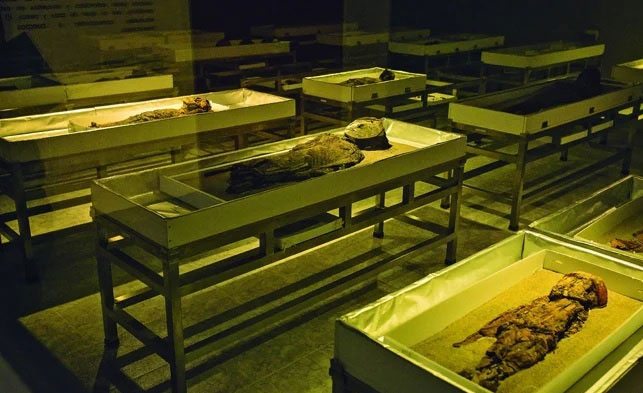The 7,000-year-old mummy is included in the World Heritage list
Chile's Chinchorro mummy, the world's oldest man-made mummy, was added to UNESCO's World Heritage list on July 27.
These mummies were found in northern Chile in the early 20th century, dating back to about 7,000 years old, predating the Egyptian mummies by 2,000 years.

To date, more than 300 mummies have been found, including red, black and bandaged mummies. (Photo: R6nationals).
The United Nations cultural organization announced on Twitter that it had added the Chinchorro culture's settlement and artificial mummification technique to a priority list during a virtual meeting hosted by China.
Bernardo Arriaza, Chilean anthropologist, told the press: "Through a variety of experts, UNESCO is assessing at an international level the settlements and artificial mummification techniques of the Chinchorro culture as possible special value, of global importance".
The ancient Chinchorro were fishermen and hunter-gatherers more than 7,000 years ago, living at the junction of the desert and the Pacific Ocean in what is now southern Peru and northern Chile.
To date, more than 300 mummies have been excavated, including red, black and bandaged mummies.
The mummification process begins with the complete removal of the body's organs, intestines, and tissues. The skin was then stripped from the carcass, then stuffed with vegetable fibers and animal hair, and the head was sewn closed with a black wig. Finally, the mummies are painted red or black which are concocted from earth, pigments, manganese and iron oxides.
Chichorro's mummification culture remains a mystery. In 2005, Arriaza, director of the Chinchorro Center at the University of Tarapaca in the city of Arica, suspected that drinking water in the area was high in arsenic contamination, leading to premature birth and miscarriage of the mother; low birth weight children and high infant mortality rates.
He said embalming is "the way parents deal with the pain of losing their children, so they paint and decorate them and the technique becomes even more elaborate".
- UNESCO registers additional world heritage sites
- 12 unique natural heritage of the world
- Close up of 800-year-old
- The thousand-year-old cat mummy has 5 legs and 3 tails
- New discovery about 2300-year-old Egyptian mummy
- Study 2,500 year mummy of 14-year-old boy
- The mysterious 2,000-year-old mummy in China still has blood
- Doctorate doctor becomes 'UNESCO World Memory'
- The world's top 10 heritage travelers should not set foot
- Detected 2,200-year-old mummy with obesity caused by eating a lot of sugar
- 10 most beautiful world heritage in Asia you can not ignore
- World famous mummies
 Suzhou classic bonsai garden - China
Suzhou classic bonsai garden - China Chau Nguyen Dynasty
Chau Nguyen Dynasty Thai Son Mountain - World Wonder
Thai Son Mountain - World Wonder Ancient villages of Shirakawa-go and Gokayama
Ancient villages of Shirakawa-go and Gokayama